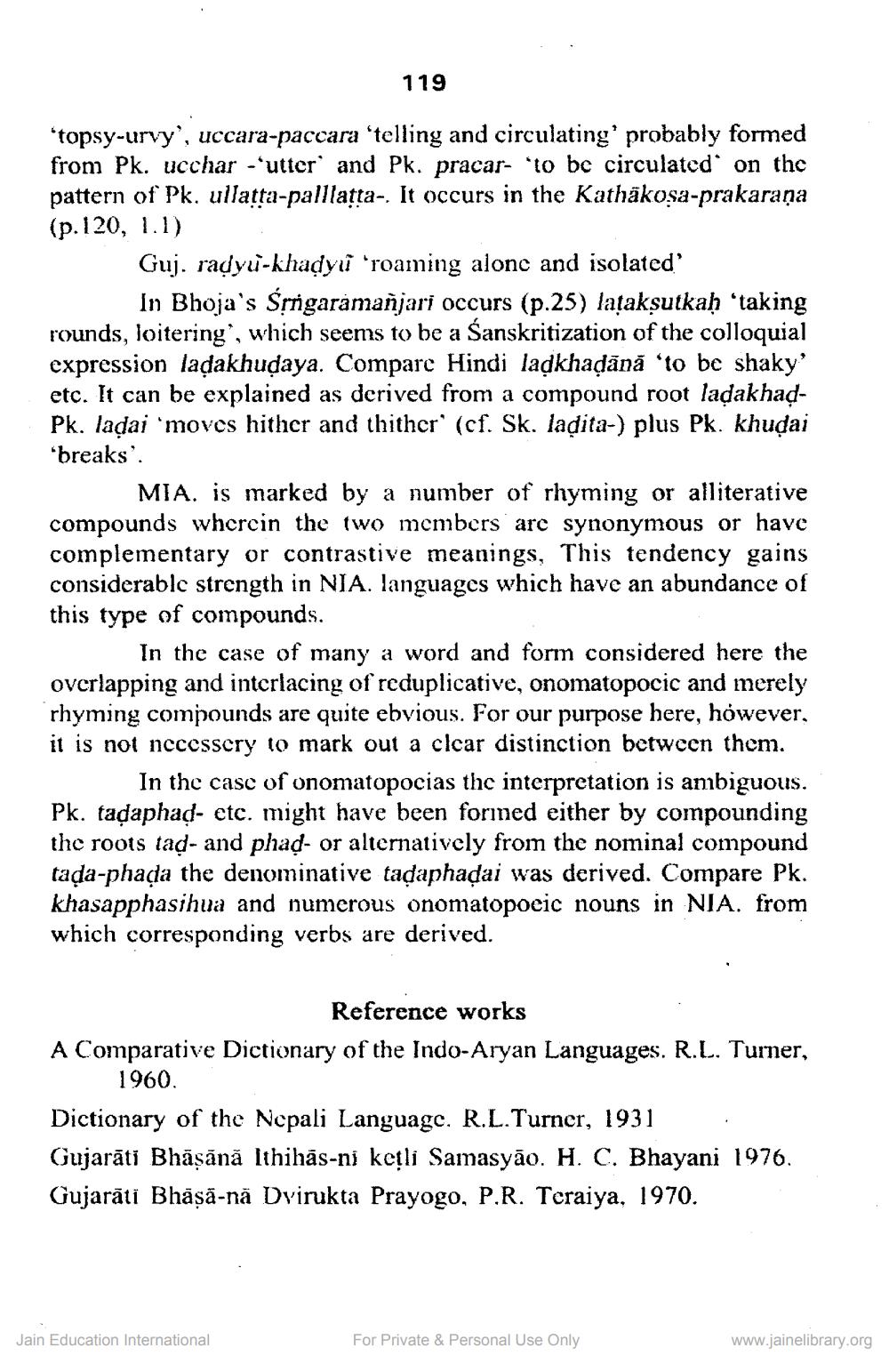________________
119
"topsy-urvy', uccara-paccara 'telling and circulating' probably formed from Pk. ucсhar - utter and Pk. pracar- 'to be circulated on the pattern of Pk. ullatta-palllatta-. It occurs in the Kathäkosa-prakarana (p.120, 1.1)
Guj. radyu-khadycū 'roaming alone and isolated'
In Bhoja's Srrigaramanjari occurs (p.25) lataksutkah 'taking rounds, loitering', which seems to be a Sanskritization of the colloquial expression ladakhudaya. Compare Hindi ladkhadānă "to be shaky' etc. It can be explained as derived from a compound root ladakhadPk. ladai 'moves hither and thither' (cf. Sk. ladita-) plus Pk. khudai 'breaks'.
MIA. is marked by a number of rhyming or alliterative compounds wherein the two members are synonymous or have complementary or contrastive meanings, This tendency gains considerablc strength in NIA. languages which have an abundance of this type of compounds.
In the case of many a word and form considered here the overlapping and interlacing of reduplicative, onomatopocic and merely rhyming compounds are quite ebvious. For our purpose here, however, it is not neccsscry to mark out a clear distinction between them.
In the case of onomatopocias the interpretation is ambiguous. Pk. tadaphad- etc. might have been formed either by compounding the roots tad- and phad- or alternatively from the nominal compound tada-phaça the denominative tadaphadai was derived. Compare Pk. khasapphasihua and numerous onomatopoeic nouns in NIA. from which corresponding verbs are derived.
Reference works A Comparative Dictionary of the Indo-Aryan Languages. R.L. Turner,
1960. Dictionary of the Nepali Language. R.L.Turner, 1931 Gujarāti Bhāṣānā Ithihās-ni ketli Samasyāo. H. C. Bhayani 1976. Gujarāti Bhāsā-nä Dvirukta Prayogo, P.R. Teraiya, 1970.
Jain Education International
For Private & Personal Use Only
www.jainelibrary.org




